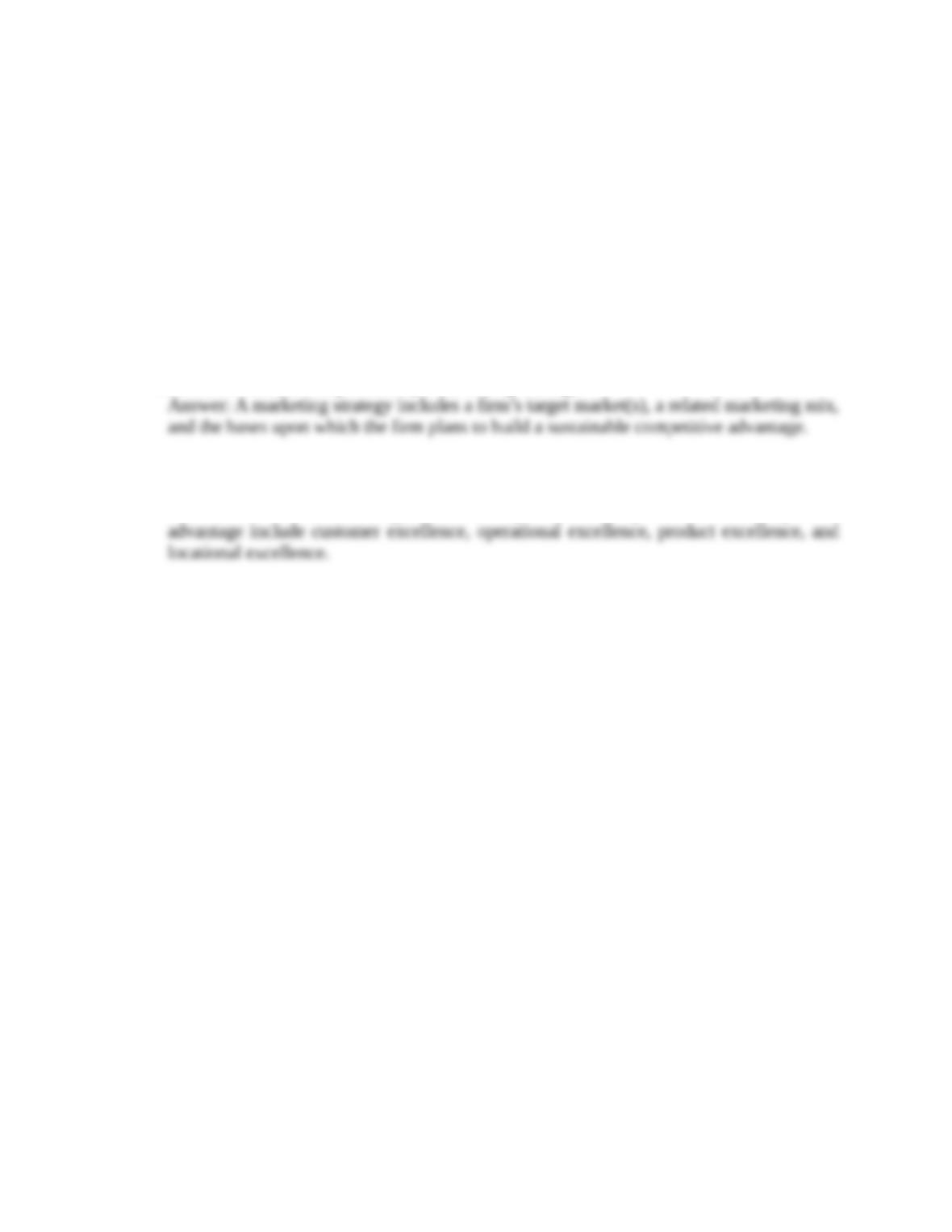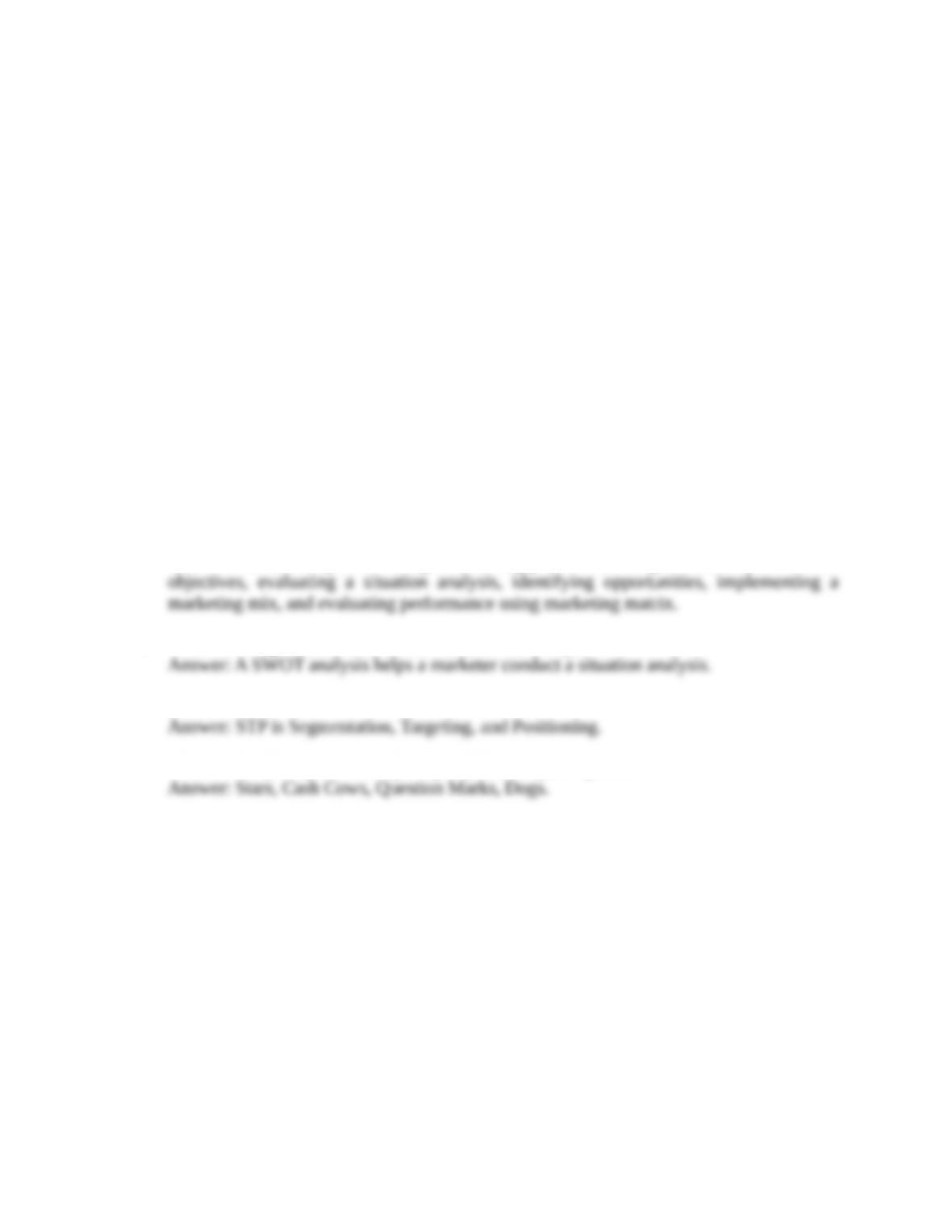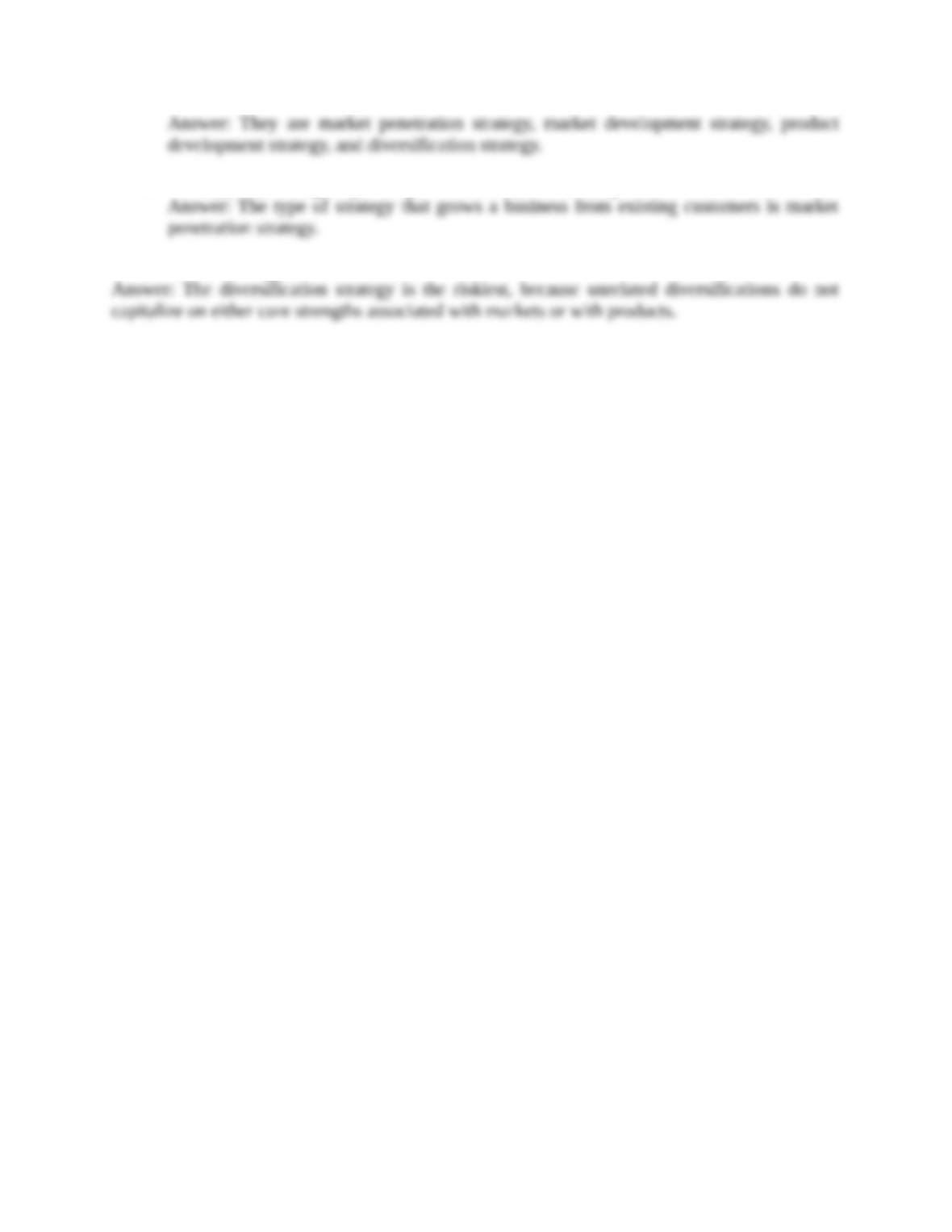A marketing strategy identifies (1) a firm’s target markets(s), (2) a related marketing mix (four
Ps), and (3) the bases on which the firm plans to build a sustainable competitive advantage.
Firms use four macro strategies to build their sustainable competitive advantage. Customer
excellence focuses on retaining loyal customers and excellent customer service. Operational
excellence is achieved through efficient operations and excellent supply chain and human
resource management. Product excellence entails having products with high perceived value and
effective branding and positioning. Finally, locational excellence entails having a good physical
location and Internet presence.
LO2 Describe the elements of a marketing plan.
A marketing plan is composed of an analysis of the current marketing situation, its objectives,
the strategy for the four Ps, and appropriate financial statements. A marketing plan represents the
output of a three-phase process: planning, implementation, and control. The planning phase
requires that managers define the firm’s mission and vision and assess the firm’s current
situation. It helps answer the questions, “What business are we in now, and what do we intend to
be in the future?” In the second phase, implementation, the firm specifies, in more operational
terms, how it plans to implement its mission and vision. Specifically, to which customer groups
does it wish to direct its marketing efforts, and how does it use its marketing mix to provide good
value? Finally, in the control phase, the firm must evaluate its performance using appropriate
metrics to determine what worked, what didn’t, and how performance can be improved in the
future.
LO3 Analyze a marketing situation using SWOT analyses.
SWOT stands for strengths, weaknesses, opportunities, and threats. A SWOT analysis occurs
during the second step in the strategic planning process, the situation analysis. By analyzing what
the firm is good at (its strengths), where it could improve (its weaknesses), where in the
marketplace it might excel (its opportunities), and what is happening in the marketplace that
could harm the firm (its threats), managers can assess their firm’s situation accurately and plan
its strategy accordingly.
LO4 Describe how a firm chooses which consumer group(s) to pursue with its marketing
efforts.
Once a firm identifies different marketing opportunities, it must determine which are the best to
pursue. To accomplish this task, marketers go through a segmentation, targeting, and positioning
(STP) process. Firms segment various markets by dividing the total market into those groups of
customers with different needs, wants, or characteristics who therefore might appreciate products
or services geared especially toward them. After identifying the different segments, the firm goes
after, or targets, certain groups on the basis of the firm’s perceived ability to satisfy the needs of
those groups better than competitors and do so profitably. To complete the STP process, firms
position their products or services according to the marketing mix variables so that target
customers have a clear, distinctive, and desirable understanding of what the product or service
does or represents relative to competing products or services.





